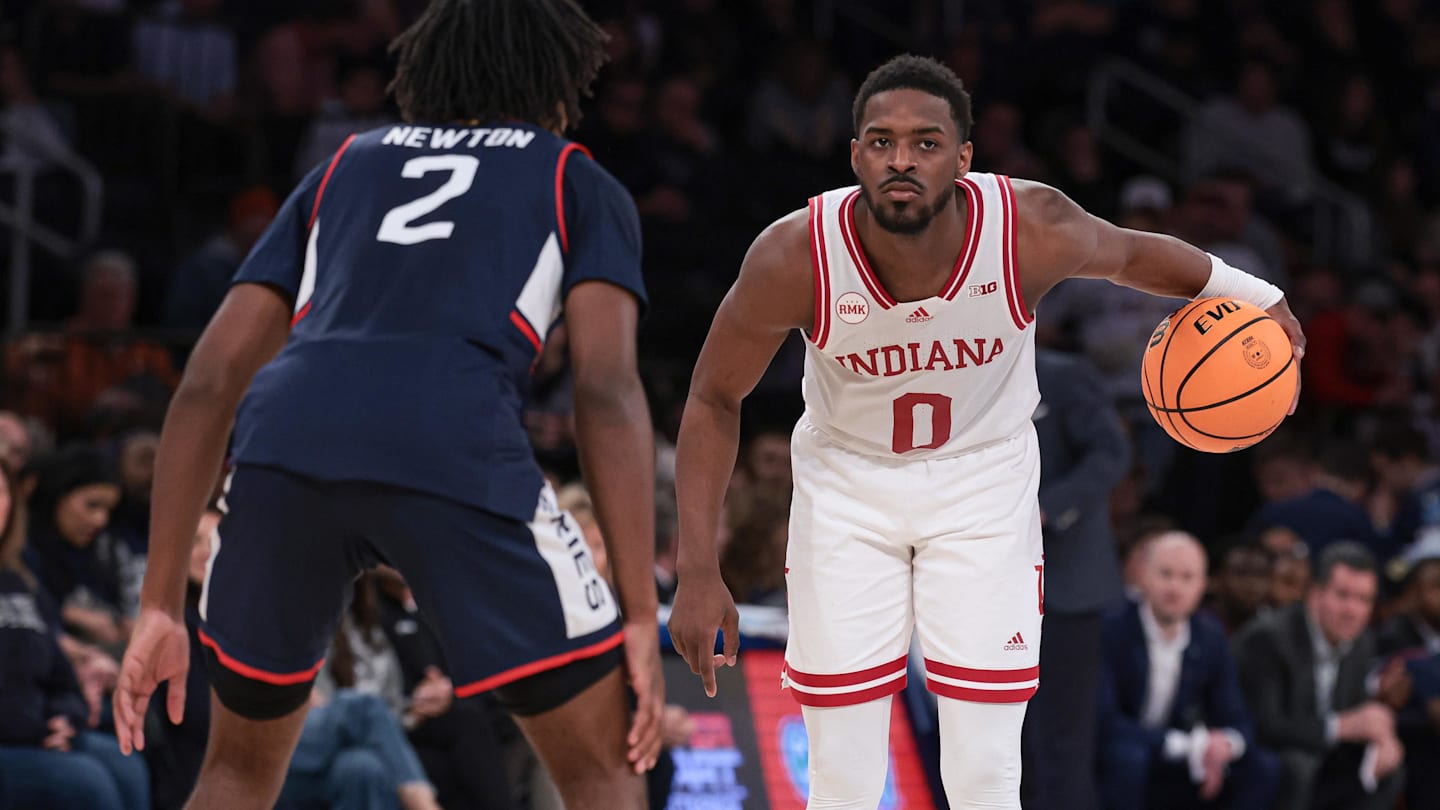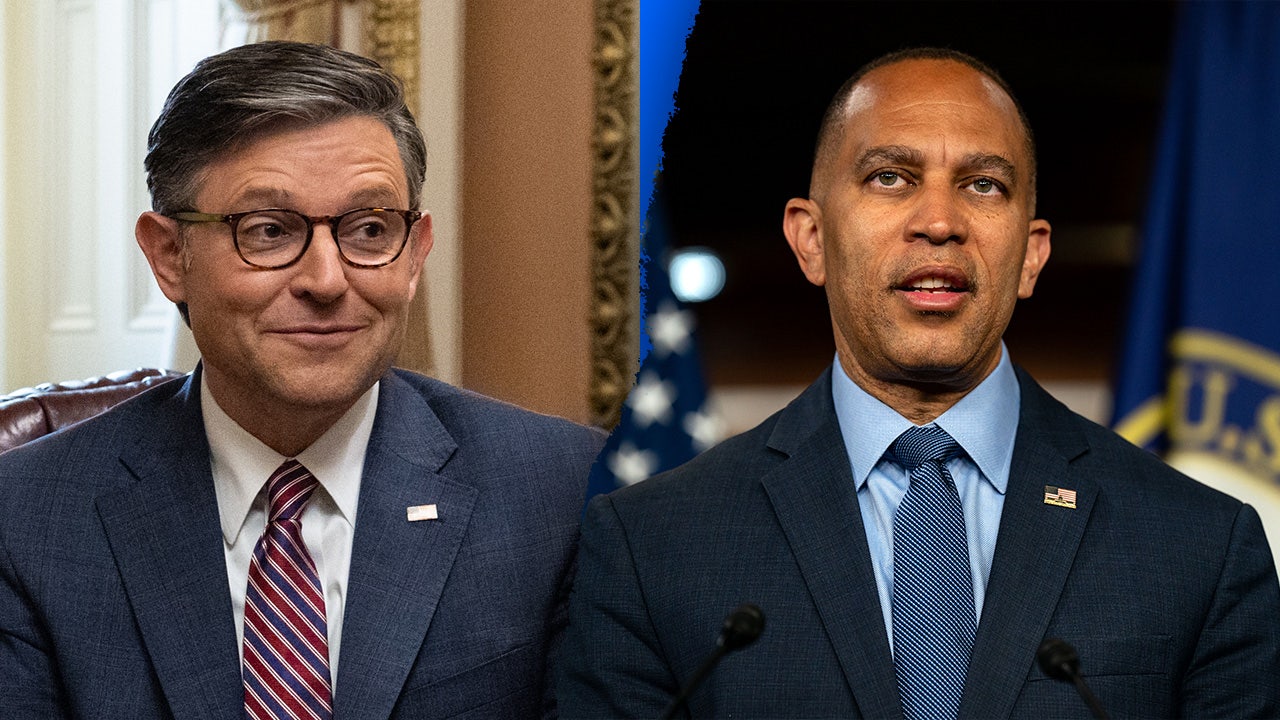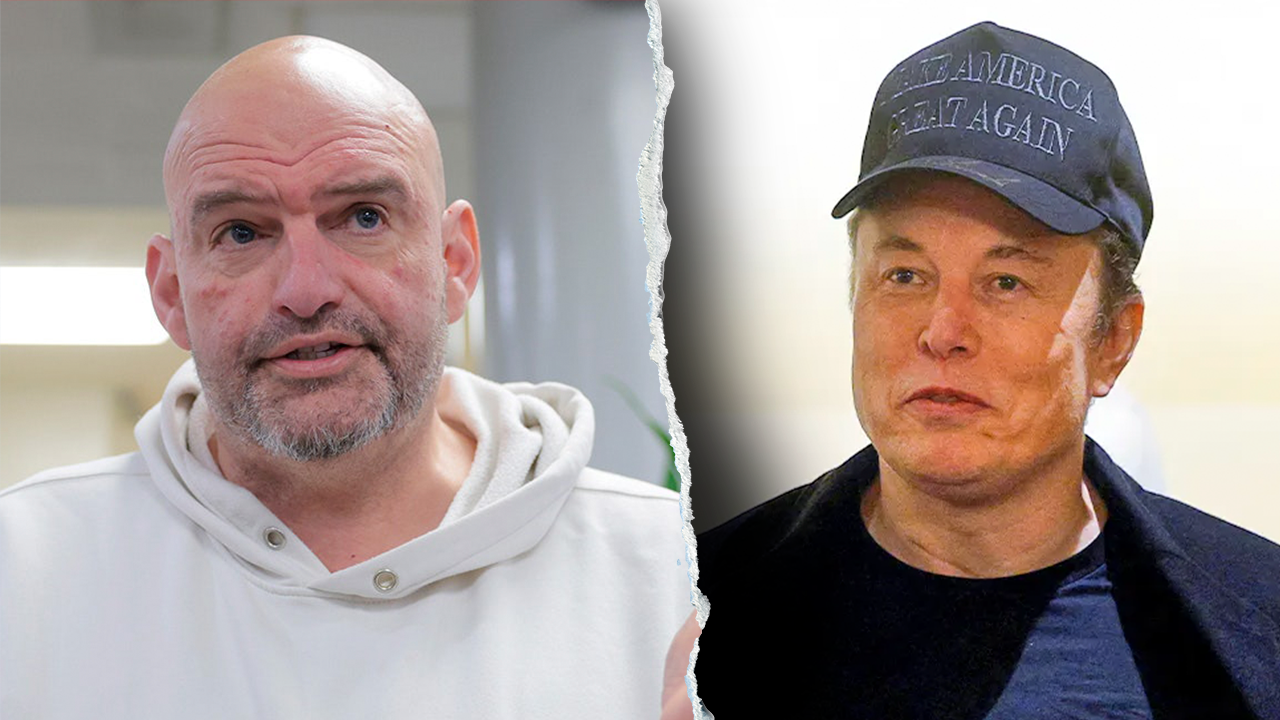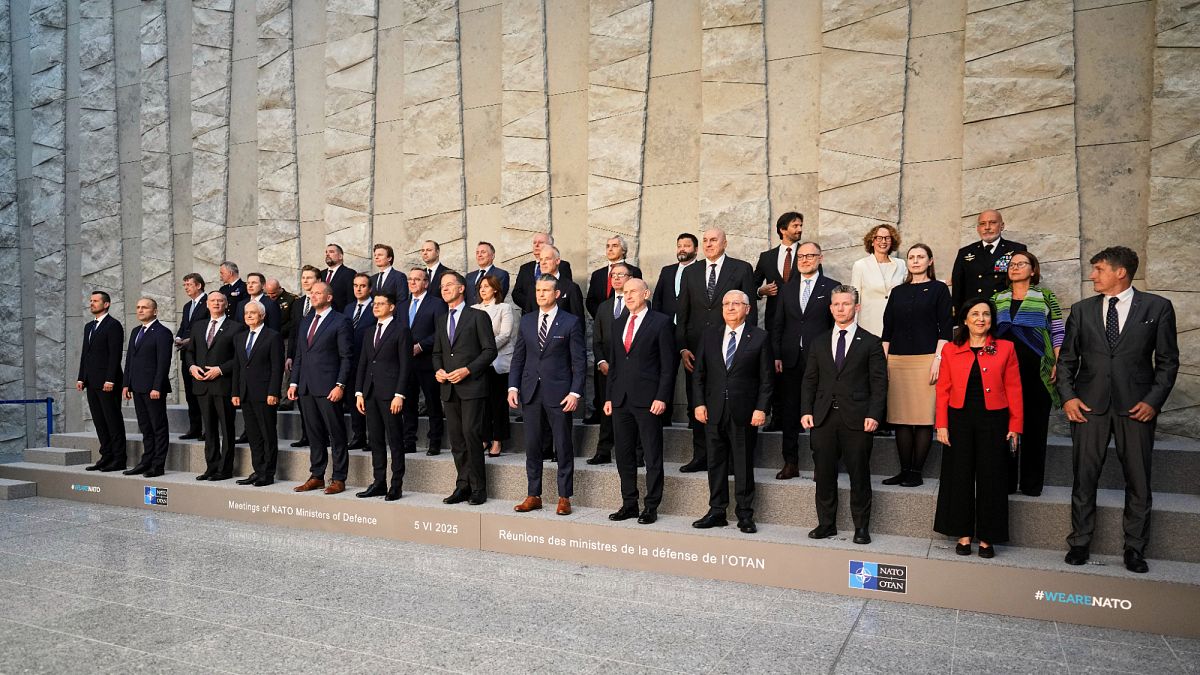Finance
An HSBC-backed startup is using AI to help banks fight financial crime — and eyeing a Nasdaq IPO

The co-founders of Silent Eight, from left to right: Michael Wilkowski, Julia Markiewicz and Martin Markiewicz.
Silent Eight
WARSAW — When it comes to financial crime, banks can often be “one decision away from a huge mess,” Martin Markiewicz, CEO of Silent Eight told CNBC.
That’s because the risk of fines and reputational damage is high if financial firms don’t do enough to stamp out crimes like money laundering and terrorist financing. But it takes huge amount of time and resources to investigate and prevent such activities.
Markiewicz’s company uses artificial intelligence (AI) to help financial institutions fight these issues in a bid to cut the amount of resources it takes to tackle crime, keeping banks in the good books of regulators.
“So our grand idea for a product … (is that) AI should be doing this job, not necessarily humans,” Markiewicz said in an interview on Thursday at a conference hosted by OTB Ventures. “So you should have a capacity of a million people and do millions of these investigations … without having this limitation of just like how big my team is.”
With Silent Eight’s revenue set to see threefold growth this year and hit profitability for the first time, Markiewicz wants to get his company in position to go public in the U.S.
How AI can catch criminals
Silent Eight’s software is based on generative AI, the same technology that underpins the viral ChatGPT chatbot. But it is not trained in the same way.
ChatGPT is trained on a so-called large language model, or LLM. This is a single set of huge amounts of data, allowing prompt ChatGPT and receive a response.
Silent Eight’s model is trained on several smaller models that are specific to a task. For example, one AI model looks at how names are translated across different languages. This could flag a person who is potentially opening accounts with different spellings of names across the world.
These smaller models combine to form Silent Eight’s software that some of the largest banks in the world, from Standard Chartered to HSBC, are using to fight financial crime.
Markiewicz said Silent Eight’s AI models were actually trained on the processes that human investigators were carrying out within financial institutions. In 2017, Standard Chartered became the first bank to start using the company’s software. But Silent Eight’s software required buy-in from Standard Chartered so the start-up could get access to the risk management data in the bank to build up its AI.
“That’s why our strategy was so risky,” Markiewicz said.
“So we just knew that we will have to start with some big financial institutions first, for the other ones to know that there is no risk and follow.”
As Silent Eight has onboarded more banks as customers, its AI has been able to get more advanced.
Markiewicz added that for financial institutions buying the software, it is “orders of magnitude” cheaper than paying all the humans that would be required to do the same process.
Silent Eight’s headquarters is in Singapore with offices in New York, London, and Warsaw, Poland.
IPO ahead
Markiewicz told CNBC that he forecasts revenue to grow more than three-and-a-half times in 2023 versus last year, but declined to disclose a figure. He added that Silent Eight will be profitable this year with more and more financial institutions coming on board.
HSBC, Standard Chartered and First Abu Dhabi Bank are among Silent Eight’s dozen or so customers.
The CEO also said the company is not planning to raise money following a $40 million funding round last year, that was led by TYH Ventures and welcomed HSBC Ventures, as well as existing investors which include OTB Ventures and Standard Chartered’s investment arm.
But he said Silent Eight is getting “IPO ready” by the end of 2025 with a view to listing on the tech-heavy Nasdaq in the U.S. However, this doesn’t mean Silent Eight will go public in 2025. Markiewicz said he wants the company to be in a good position to go public, which means reporting finances like a public company, for example.
“It’s an option that I want to have, not that there’s some obligation or some investor agreement that I have,” Markiewicz said.

Finance
The CFO’s New Caddie: How LPGA is Teeing Up a Future-Ready Finance Team

When you think of the Ladies Professional Golf Association (LPGA), you might picture championship swings on perfectly manicured fairways. But behind the glamour of the tour is a complex, multi-layered global business navigating the same intense financial pressures as any other international enterprise.
For Mary Salter, LPGA’s Chief Financial Officer (CFO), steering this operation meant confronting a hazard that wasn’t on the course: a legacy finance system holding her team back. Navigating the risks of on-premise servers and cumbersome manual processes required a new kind of caddie—one powered by modern technology.
“Prior to Sage Intacct, we were on an older Sage product,” Salter explained during an interview with ERP Today at the Sage Future Conference in Atlanta. “Our data was on a local server, and we’d heard about some other organizations that were having these cybersecurity breaches, so we knew we needed to address security. Moreover, we found that just transacting in the old system had become cumbersome, and we were even doing bank recs in Excel, which was a bit antiquated.”
According to Salter, the move to Sage Intacct was, therefore, about mitigating risk and fundamentally changing the finance team’s role from scorekeepers to strategic players.
Giving Time Back to Drive the Business Forward
For Salter, the actual value of any technology is measured in the one resource you can’t buy: time. The goal was to automate the mundane to free up her team for more impactful work.
“Any right technology tool should give you time back, so you can use and repurpose it to do more strategic things or process improvements, or tasks that can drive the business forward,” Salter stated.
This philosophy extended beyond the finance department. By implementing a system with accessible dashboards and streamlined check requests, managers across the LPGA were empowered. The efficiency gains were not isolated in a single department but radiated throughout the organization, allowing everyone to focus on what truly matters.
Building Trust in a World of AI and Automation
However, implementing a new system is one thing; trusting it is another. This is especially true when introducing concepts like AI and automation. For Salter, trust was the linchpin for successful adoption. “Can I trust the outputs? Can I trust what the system is producing?” she asked, voicing a concern many finance leaders share when evaluating new technology.
The proof came from tangible results. A prime example was the month-end close, a notoriously painful process for any organization with multiple subsidiaries. Salter said that the LPGA has five, including three international entities.
“Consolidation took days before the new system,” Salter recalled. “Once we shifted to Sage Intacct, consolidation began to take minutes instead of days and was very reliable and trustworthy. We’ve now reduced the close time by 50%.”
Salter added that when presenting financials to the board or executive leadership, she could stand behind the numbers with absolute certainty, backed by a system that worked flawlessly under pressure.
A Flexible, Future-Forward Partnership
One of the most compelling aspects of the LPGA’s journey is its pragmatic, piece-by-piece approach to modernization. Rather than a disruptive big bang implementation, the LPGA adopted capabilities as its needs evolved—a strategy that Sage highlighted in its announcements this week.
Salter pointed to a specific example with their UK subsidiary. At the time of implementation, the subsidiary’s existing Sage 300 product was better suited for local VAT tax requirements. Instead of forcing a fit, they waited. “We pivoted and decided not to put our UK subsidiary on Sage Intacct until the product could be further developed,” she said.
This forward-looking, adaptable approach excites Salter the most, especially with the recent announcements about Sage Copilot and AI. “I love a partner that is not just meeting you where you are but providing something that you didn’t even know you needed,” she remarked.
For the LPGA, finance transformation is not the end goal. It’s a critical enabler of its core mission. As Salter concluded, “Our mission is simple: to empower women and change their lives through the game of golf. So, if anyone can come alongside us and help drive that mission home, we’re excited about that opportunity.”
What This Means for ERP Insiders
Embrace composable ERP as a practical reality. The monolithic, all-or-nothing ERP implementation is no longer the only path. The LPGA’s decision to temporarily keep its UK subsidiary on a different system demonstrates the power of a flexible, phased approach. For ERP professionals, this means focusing on incremental value and choosing partners that allow building a tech stack that fits the business’s unique, evolving needs rather than forcing the company to fit the software.
User trust is the gateway to AI adoption. Sage’s investment in AI and tools like Sage Copilot is exciting, but Salter’s perspective underscores a critical truth: adoption hinges on trust. Before finance teams embrace AI for complex forecasting, the system must prove its reliability on foundational tasks. By automating and perfecting processes like financial consolidation, Sage is building the credibility needed for users to trust its AI-driven insights eventually. The lesson is clear: build trust in the basics first, and the leap to advanced AI will feel like a natural next step, not a risk.
The true ROI of ERP is redeployed human intellect. A modern ERP’s most powerful business case is process efficiency and elevating the human workforce. Salter’s focus on giving time back so her team can drive the business forward is the ultimate goal for most finance organizations. For ERP professionals building an investment case, the narrative should shift from cost savings to value creation. A successful implementation unleashes an organization’s workforce from the drudgery of manual tasks to focus on strategic analysis, innovation, and direct impact on the organization’s mission.
Finance
Chinese lenders among top backers of “forest-risk” firms

Recent data shows that Chinese banks have become the largest creditors to “forest-risk” companies, after major producing countries Brazil and Indonesia
Adobe Stock
Key findings
- Recent data shows that Chinese banks have become the largest creditors to “forest-risk”* companies, after major producing countries Brazil and Indonesia, with over $23 billion in financing provided from 2018 to 2024.
- Key Chinese banks, including CITIC, Industrial and Commercial Bank of China and Bank of China, are among the top creditors for “forest-risk” companies such as Royal Golden Eagle Group, which has faced repeated allegations that its supply chain has driven deforestation.
- The increasing flow of finance to “forest-risk” companies undermines China’s climate and environmental goals under the Glasgow Leaders’ Declaration and national Green Finance Guidelines.
- Meanwhile, Chinese banks rank poorly compared to their international counterparts in terms of deforestation-related policies, with four out of six major Chinese lenders scoring zero in the Forest 500 annual policy assessment.

Cattle in Pará State of Brazil. 60% of tropical deforestation is linked to just three key products – beef, palm oil and soy. Fernanda Ligabue / Global Witness
Recommendations
- Chinese banks and regulators must take stronger action to cut ties with deforestation-linked companies.
- Chinese banks should publish and implement clear zero deforestation and human rights protection policies when financing “forest-risk” companies.
- Banks should implement China’s 2022 Green Finance Guidelines by establishing due diligence processes to identify, monitor and screen out clients linked to deforestation.
- Chinese banks should establish open communication channels to rapidly receive and address deforestation allegations from international community.
- The Chinese banking regulator should strengthen green finance policies with clear requirements that banks cease financial support to companies with deforestation-linked supply chains.
Ranking global contributors to “forest-risk” finance: China’s rise to the top
Chinese banks became the largest creditors of “forest-risk” companies globally between 2018-2024 – excluding financial institutions based in Brazil and Indonesia – according to a new analysis by Global Witness, based on data released in September 2024 by the Forests & Finance coalition.
This marks a shift from Global Witness’s previous reporting on Chinese bank finance in 2021, which used Forests & Finance data from 2013-2020. During this period, Chinese banks were the fifth largest creditors globally of major companies producing and trading commodities at high risk of driving deforestation.
The Forests & Finance database, compiled by Dutch research firm Profundo, tracks financial flows to over 300 “forest-risk” companies involved in agricultural supply chains such as beef, palm oil and soy production – industries that are major drivers of tropical deforestation.
Profundo’s methodology, including how it defines “forest-risk” companies, is summarised below.
The financial sectors of Brazil, Indonesia and Malaysia provide a disproportionate amount of “forest-risk” financing to commodity producers in their own countries and are excluded from this analysis, which focuses on international financial flows. When including these countries, China ranked third globally overall in 2023, the final year for which full data is available.
At COP26, countries like the US, France, the Netherlands and the UK pledged to end deforestation by 2030. However, private financial institutions based in those financial centres also remain some of the biggest supporters of “forest-risk” companies.
According to the data, between 2018-2024, Chinese banks provided a total of $23 billion in credit to “forest-risk” companies.
This figure for the seven-year period is higher than the figure provided in the seven-year period between 2014-2020 ($18 billion), indicating that the financial sector has failed to adjust lending practices to mitigate the damage some of these companies are wreaking upon global forests.
There are a handful of key Chinese banks among the top creditors providing “forest-risk” financing – CITIC, Industrial and Commercial Bank of China and Bank of China were the top three creditors between 2018-2024, according to the data.
The two biggest “forest-risk” recipients of this Chinese bank lending are Sinochem and Royal Golden Eagle Group (RGE), despite both RGE and its subsidiaries facing repeated deforestation allegations.
COFCO, a major Chinese agricultural trader, is the third-largest recipient. Despite the company’s multiple commitments to address deforestation, in 2024 COFCO was alleged to have sourced soybeans from illegally leased Indigenous lands in Brazil.
Just one year prior, another investigation challenged whether COFCO had done enough to ensure its soy and palm oil supply chains were indeed deforestation-free.
In response COFCO claimed that it has not violated its own commitments, insisting that it takes numerous measures to monitor and enforce its supply chain standards.
It claimed the farmers tied to deforestation were indirect suppliers and said it was “working to increase traceability of indirect purchases, which will lead us to strengthen our controls and risk monitoring for this part of the supply chain.”
One noteworthy data highlight is that, in 2024, Chinese bank credit provision to global manufacturing conglomerate RGE spiked, despite data for 2024 only including deals made between January-July.
RGE’s sprawling network of “shadow companies” has faced multiple allegations of deforestation over the years in relation to its palm oil and pulp and paper supply chains.
RGE denies allegations of wrongdoing. In response to a July 2024 publication published by the Rainforest Action Network (RAN), RGE claimed it was “local communities”, rather than one its subsidiary companies, who were responsible for clearing forests in its palm oil supply chain – despite allegedly providing no evidence to support this conclusion.
RGE has also denied links to deforesting companies in its pulp and paper supply chains, most recently in response to an October 2024 investigation from The Gecko Project and Bloomberg.

Orangutans in the protected Tanjung Puting National Park in Kalimantan on the island of Borneo, Indonesia. Paula Bronstein / Getty Images
Over the past two years, RGE has received a series of sustainability-linked loans (SLL) supported by a consortium of banks, including Chinese banks such as Shanghai Pudong Development Bank Co, Ltd and Bank of Communications (Hong Kong) Ltd.
These “sustainable” loans allow RGE to borrow under more favourable conditions, providing it hits pre-determined “linked” environmental and social targets.
For example, the $1 billion 2024 SLL (provided to two “sustainable” palm oil producers in RGE’s network of subsidiaries Asian Agri and Apical) is tied to indicators of the companies’ compliance with “anti-deforestation commitments”, as well as to independent suppliers’ traceability verification.
However, the credibility of these “sustainable” deals was called into question in the above published by the Rainforest Action Network.
Why this matters: Chinese banks’ lack of robust deforestation policies
The rising influence of Chinese banks in “forest-risk” sectors is of particular concern given that Chinese banks persistently have some of the weakest deforestation policies in place compared with banks from other countries.
The lack of formal policy raises questions about whether and how the world’s top creditors to “forest-risk” agribusinesses are carrying out due diligence to ensure their investments do not drive deforestation.
One way of comparing the strength of banks’ policies on deforestation is via the Forest 500, prepared by Global Canopy, which ranks financial institutions based on an evaluation of their publicly available commitments to tackle deforestation and related human rights abuses, assessing factors such as if all commodities are included, as well as the transparency of their reporting against targets.
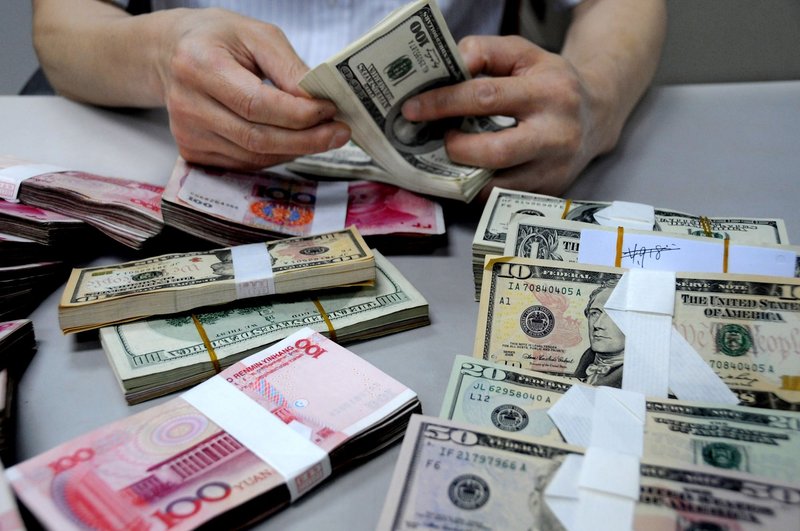
Key Chinese banks, including CITIC, Industrial and Commercial Bank of China and Bank of China, are among the top creditors for “forest-risk” companies. VCG via Getty Images / Getty Images
Four out of six major Chinese lenders (including CITIC, Bank of China, Industrial and Commercial Bank of China) assessed in Forest 500’s database have policy scores of zero. Just two Chinese banks score above zero: China Construction Bank scores three points and Agricultural Bank of China scores four points.
All the banks from China in this assessment also score zero points for their approach to human rights abuses associated with deforestation, apart from Agricultural Bank of China, which scores one point only.
By comparison, the overall highest scoring financial institution in Forest 500’s ranking is Schroders, which scores a total of 58.5 points, and has a policy to eliminate “forest-risk” commodity-driven deforestation from its portfolios by 2025.
According to Forest 500, a strong deforestation policy for a bank includes clear, time-bound commitments to eliminate deforestation and associated human rights abuses from its financing, applies to all high-risk commodities across all financial services, and includes robust implementation measures such as due diligence, monitoring and transparent reporting.
Global Witness approached Bank of China, Industrial and Commercial Bank of China and CITIC with an opportunity to comment on the report’s findings – including their financing activities and apparent lack of deforestation policies. None of the three banks responded to this request.
Recommendations: What should change
Chinese banks and their regulators must take their deforestation-risk portfolio seriously – the increasing financial support to the “forest-risk” companies shown by our analysis suggests a clear departure from China’s commitment and national policies.
The increasing flow of this funding, coupled with no national regulations to prevent it falling into the hands of deforesting companies, appears to contradict the commitments China has made on the international stage – such as those made under the Glasgow Leaders’ Declaration, signed by China and more than 140 nations at COP26, that commits to realigning financial flows with forest protection.
Crucially, supporting companies with a track-record of causing environmental and social harm is also at odds with China’s national policies, especially those designed to guide and leverage finance to support the green and low-carbon transition.
For example, in 2022, a major overarching policy called Green Finance Guidelines set out detailed expectations for banks and insurance companies to identify, monitor, prevent and control their environmental, social and governance (ESG) risks.
The guidelines made it clear that banks should “strictly restrict” granting credit to clients that face significant environmental and social violations and risks (article 20) and strengthen ESG risk management in their credit and investment granting for overseas Belt and Road projects (article 25).
In recent years, China has made efforts to decarbonise its economy and balance growth within planetary boundaries. In fact, the world is increasingly looking to China for leadership in climate and nature actions as the country explores new opportunities in the clean energy sectors.

Rainforest being removed to make way for palm oil and rubber plantations. WhitcombeRD / Getty Images
Since the 10th anniversary of the Belt and Road Initiative, China has also introduced a series of policies aimed at greening or reducing risks associated with overseas investments.
Despite being one of the world’s largest markets for “forest-risk” commodities such as soy, beef and palm oil, China currently lacks a national policy prohibiting the import of commodities linked to deforestation.
However, China has made notable bilateral commitments with key forest country partners. For instance, in April 2023, China and Brazil pledged to collaborate on eliminating deforestation and illegal logging, while also enforcing laws to prevent illegal imports and exports.
Major Chinese food companies and traders are piloting “deforestation-free” shipments of commodities like soy, and efforts are underway to make Brazilian beef supply chains to China more traceable.
Global Witness’ analysis suggests that Chinese banks and their regulators can do much more to reverse the environmental and social harm caused by financing deforestation-linked companies, which undermines China’s international climate and nature goals.
Global Witness calls for:
- Chinese banks should publish and implement clear zero deforestation and human rights protection policies when financing “forest-risk” companies.
- Banks should implement China’s 2022 Green Finance Guidelines by establishing due diligence processes to identify, monitor and screen out clients linked to deforestation.
- Chinese banks should establish open communication channels to rapidly receive and address deforestation allegations from international community.
- The Chinese banking regulator should strengthen green finance policies with clear requirements that banks cease financial support to companies with deforestation-linked supply chains.
Methodology
The Forests & Finance coalition dataset, produced by Profundo and analysed by Global Witness, identifies financial transactions with more than 300 company groups that are involved in the upstream segment of the beef, palm oil, pulp and paper, rubber, soy and timber supply chains in Southeast Asia, Central and West Africa and South America, collectively referred to as “tropical forest-risk sectors” as they drive most deforestation.
Profundo notes that this selection of “forest-risk companies” is “intended to be a representative sample of companies most impacting tropical forests … Factors that led to their selection include the size of the company and land area of operation, access to information on their financing, and known negative impacts of their operations on tropical forests.”
Profundo’s data is compiled from Bloomberg, Refinitiv, Orbis and other sources, along with company reports.
The dataset captures six types of asset class and transaction, split into investments (2024; bondholding and shareholding), and credit (2010-2024; revolving credit facilities; loan issuance; bond issuance and share issuance).
Profundo applied “segment adjusters” to each company to estimate how much of a given portion of total finance could reasonably be expected to have financed the production or trade of a “forest-risk” commodity.
That means, for example, that finance provided by a Chinese financial institution to the US branch of a global conglomerate company is discounted, meaning all financing in this dataset are Profundo’s estimates of funding allocated towards commodity production in regions where deforestation occurs.
Read more information on Profundo’s methodology.
Finance
401(k) savers stayed on course through market volatility, Fidelity found
Retirement savers weathered a chaotic stretch of market gyrations in the first three months of the year, consistently adding to their savings, according to Fidelity Investments’ quarterly analysis.
While they experienced a drop in average 401(k), 403(b), and IRA balances, mostly due to market swings, savings rates remained consistent, with the average 401(k) savings rate increasing to a record 14.3%.
“We saw a lot of positive savings behaviors among employees,” Michael Shamrell, vice president of workplace thought leadership at Fidelity Investments, told Yahoo Finance.
“It was really encouraging to see that despite a lot of things going on, and economic ups and downs, people continued to save and didn’t pull back, or make a lot of changes to their asset allocation,” he said. “As a result, we saw the individual 401(k) savings rate increase to the highest level that we’ve seen.”
To break it down, the average employee contribution rate was 9.5%, and the employer contribution rate was 4.8%. This combined savings rate of 14.3%, up from 13.5% in 2020, is the closest it’s ever been to Fidelity’s suggested savings rate of 15%.
“For years, the individual savings rate was stuck at 8%,” Shamrell said.
Overall, average 401(k) retirement account balances dropped 3% through the first three months of this year to an average of $127,100 from $131,700 at the end of 2024. This was the second-highest average on record for the firm and an 11% increase from the start of 2024.
The data is based on 25,300 defined contribution plans at various companies across the country, covering 24.4 million participants.
Read more: How much can you contribute to your 401(k) in 2025?
In the first quarter, 17.4% of people with 401(k) accounts at Fidelity increased their savings rate, while 5% decreased. Less than 1% stopped saving altogether.
Surprisingly, only 6% changed their 401(k) asset allocation. Of those who did, about 3 in 10 moved into more conservative investments.
There are two big drivers.
First, automatic enrollment in employer-provided retirement accounts for new employees and auto-escalation each year keep the trains running through all kinds of uncertainty.
More than 1 in 4 plans now offer employer-set automatic escalation, and 35% of plans default to automatically enrolled employees at a 5% contribution rate or higher, according to Fidelity data, with an annual 1% increase until reaching roughly 10% of pay.
“The increasing use of auto escalation is a big factor in why we are seeing a gradual increase in the individual savings rate,” Shamrell said.
-

 News1 week ago
News1 week agoVideo: Faizan Zaki Wins Spelling Bee
-
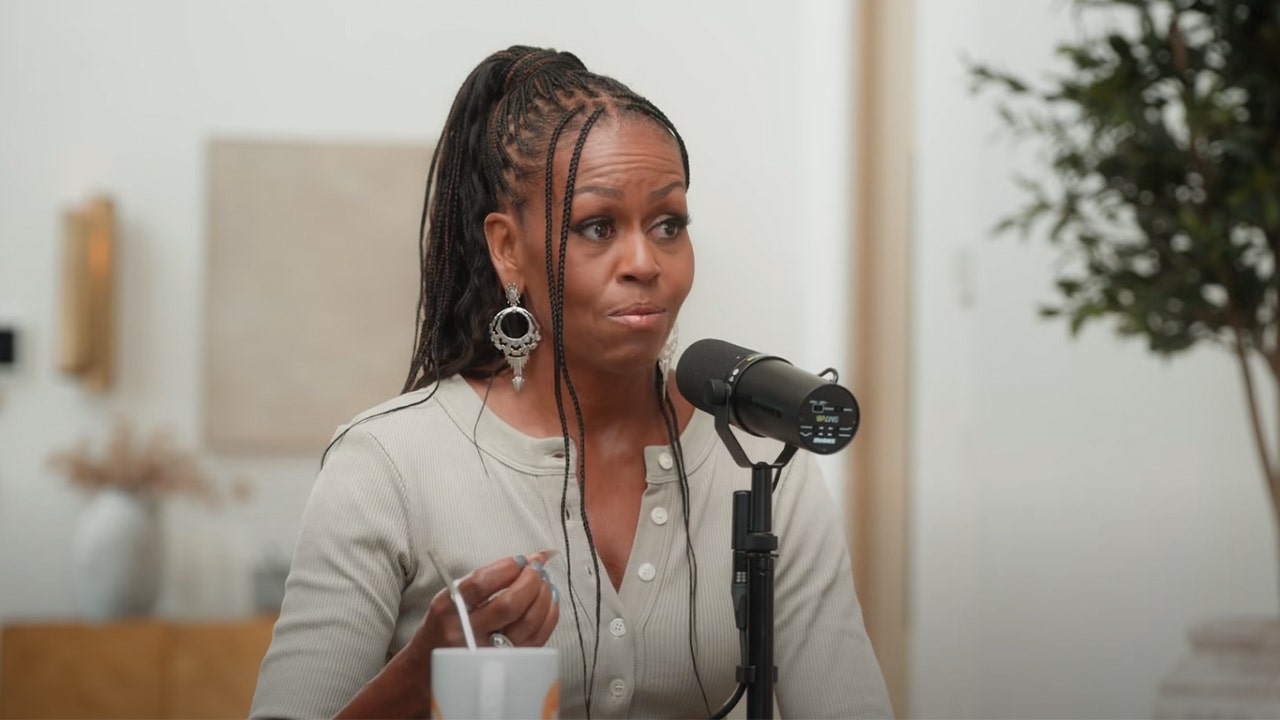
 Politics6 days ago
Politics6 days agoMichelle Obama facing backlash over claim about women's reproductive health
-

 News1 week ago
News1 week agoVideo: Harvard Commencement Speaker Congratulates and Thanks Graduates
-
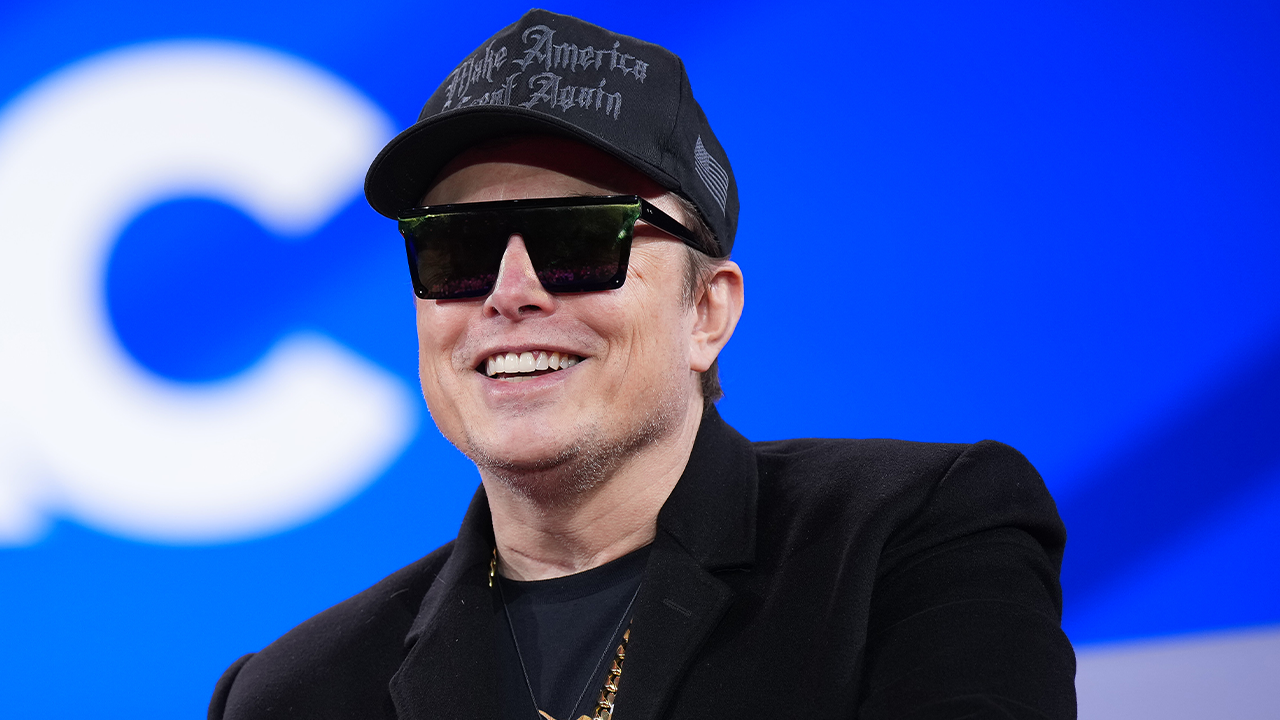
 Politics1 week ago
Politics1 week agoMusk officially steps down from DOGE after wrapping work streamlining government
-

 News1 week ago
News1 week agoPresident Trump pardons rapper NBA YoungBoy in flurry of clemency actions
-

 Technology1 week ago
Technology1 week agoAI could consume more power than Bitcoin by the end of 2025
-

 Technology1 week ago
Technology1 week agoSEC drops Binance lawsuit in yet another gift to crypto
-

 Business1 week ago
Business1 week agoSix Flags to cut 135 jobs at Knott’s, Magic Mountain and other California parks






